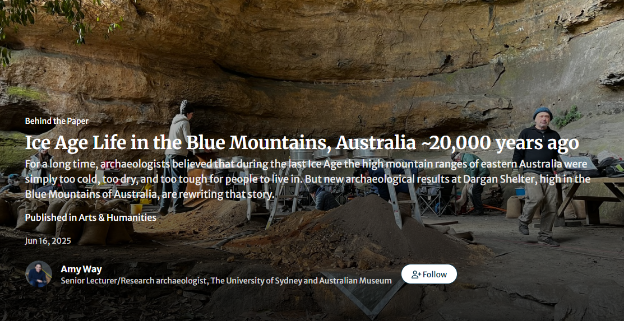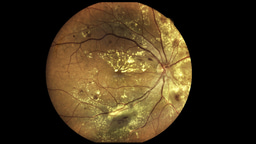June Highlights from Humanities and Social Sciences Communities
Published in Social Sciences, Arts & Humanities, and Law, Politics & International Studies

This month, I’d like to highlight a diverse collection of blog posts that show the power of research across topics – from celebrating International Women in Engineering Day and marking World Refugee Day, to revealing overlooked climate risks in the media, addressing health inequalities in Uganda, and uncovering Ice Age life in Australia's mountains. Check them out and see what catches your interest!
Celebrating Women Innovators: Marking International Women in Engineering Day

Can you name any women who have invented processes or devices that have had a great impact on our lives? Every year on June 23rd, International Women in Engineering Day celebrates the achievements of women who have transformed science, engineering, and technology.
This year, the authors of the book Women in the National Inventors Hall of Fame: The First 50 Years, @Ilene Busch-Vishniac , Lauren Busch, and @Jill S Tietjen, discuss the women who have been honored by NIHF. In their blog post, the editor @Mary E James and the authors highlighted fascinating insights from the book.
Curious how women inventors moved from creating dishwashers and sewing machines to breakthroughs like bulletproof vests, Wi-Fi, and gene editing? Discover the stories behind these groundbreaking inventions and see how women inventors have shaped the world we live in today!
Celebrating World Refugee Day 2025

Over 122 million people worldwide are now forcibly displaced – the highest number ever recorded. Every year on June 20th, World Refugee Day reminds us of the human stories behind these numbers, and why solidarity and urgent action are needed more than ever.
The editor @Juliette Ruth Kleemann shared a thoughtful blog exploring the 2025 UN theme “Solidarity with Refugees,” and presents recent Springer Nature open access and hybrid research relating to refugees, covering topics from mental health to healthcare services for immigrants, which aligns with Sustainable Development Goals (SDGs) 3: Ensure healthy lives and promote well-being for all at all ages.
Read the full blog post to discover the research, voices, and stories behind the headlines, and see how science and society can work together to leave no one behind.
Improving Rehabilitation Services in Uganda: Challenges and Progress
This blog post, originally written by Prof. Louise Ackers and shared by editor @Anca Pusca, looks at seven years of research on rehabilitation services for people with major limb loss in Uganda. The research shows that current rehabilitation services, heavily shaped by overseas aid, face several problems, such as fragmented services, duplication, and unequal access.
To address these issues, the team co-designed a new model based on social enterprise rather than donations, involving local technologists and users, and building international supply chains. The open access book Delivering Universal Health Care to People with Major Limb Loss or Damage in Low and Middle Income Countries shares these insights.
Read this behind the book blog post to explore the complexities of global health partnerships and the efforts needed to support vulnerable communities with sustainable impact.
Heatwaves Kill – So Why Don’t They Lead the News?

While heatwaves are the deadliest climate events in Germany, they rarely make it into early or leading news slots on German television. In contrast, floods and storms get more prominent coverage, likely due to their dramatic economic damage.
In a study of over 28,000 news items from 2015 to 2023 published in Communications Earth & Environment author @Tatjana Schirmag reveals that German TV coverage of climate change focuses heavily on climate policy, while tangible impacts like heatwaves get less frequent and later airtime. This matters because media coverage shapes public concern and engagement on climate issues.
Explore the blog post to understand the hidden dynamics behind climate news coverage and what it means for how we face the climate crisis together.
Ice Age Life in the Blue Mountains, Australia ~20,000 Years Ago

Did you know that during the last Ice Age, people were already living high in Australia’s Blue Mountains – once thought too cold and harsh for human life?
In a fascinating Behind the Paper blog post, archaeologist @Amy Way shares insights from the excavation of Dargan Shelter, the earliest known high-elevation Ice Age site in Australia, published in Nature Human Behaviour. The team unearthed hearths, charcoal, and nearly 700 stone tools, showing that people repeatedly returned to this site around 20,000 years ago – right in the coldest period of the Ice Age.
Read the full blog to explore how people adapted, travelled, and lived in the heights of the Ice Age, and what this means for how we see Australia’s deep history today.
From celebrating innovation to challenging assumptions and rethinking how we support vulnerable communities, these blog posts highlight the power of research to uncover new insights and spark important conversations.
If a post resonates with you, don’t hesitate to leave a like or share your thoughts in the comments; your voice helps keep these discussions going!
Further reading:
Follow the Topic
-
Nature Human Behaviour

Drawing from a broad spectrum of social, biological, health, and physical science disciplines, this journal publishes research of outstanding significance into any aspect of individual or collective human behaviour.
-
Communications Earth & Environment

An open access journal from Nature Portfolio that publishes high-quality research, reviews and commentary in the Earth, environmental and planetary sciences.
Related Collections
With Collections, you can get published faster and increase your visibility.
Geology of the Moon
Publishing Model: Hybrid
Deadline: Jan 31, 2026
Drought
Publishing Model: Hybrid
Deadline: Mar 31, 2026





Please sign in or register for FREE
If you are a registered user on Research Communities by Springer Nature, please sign in